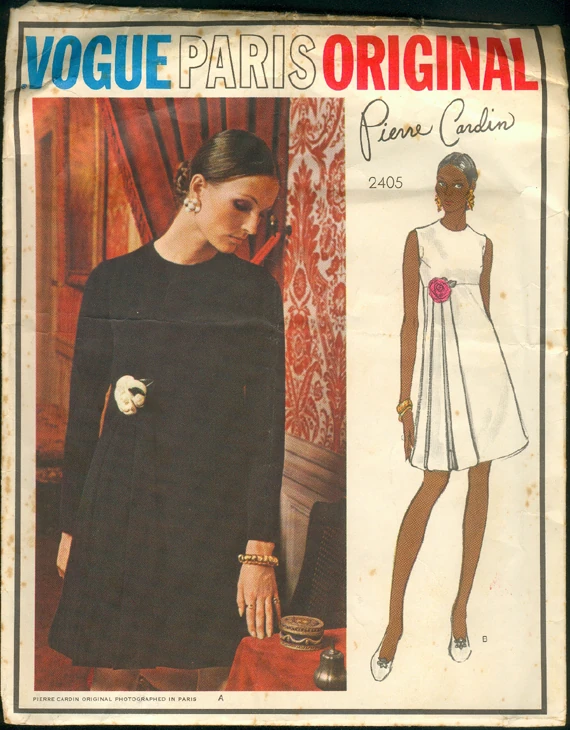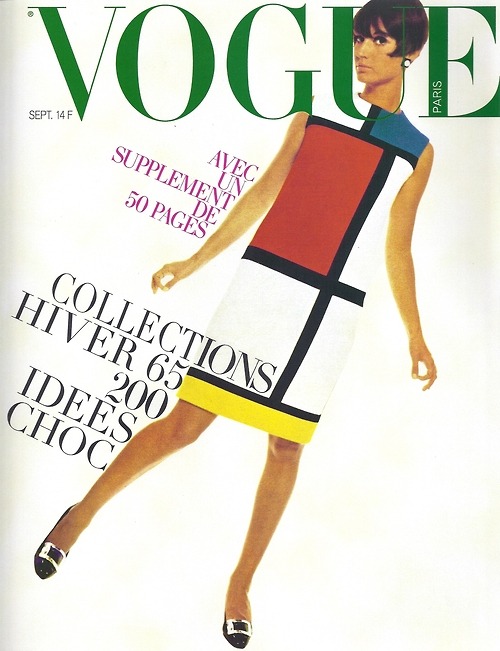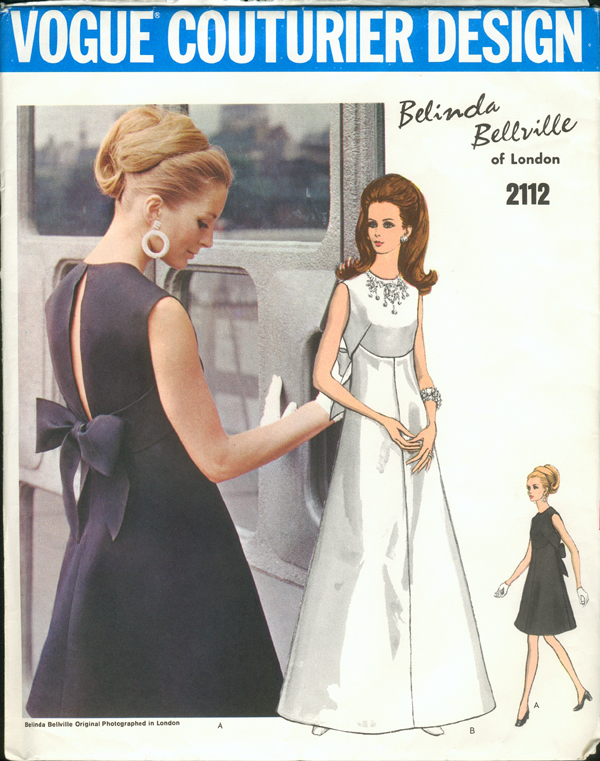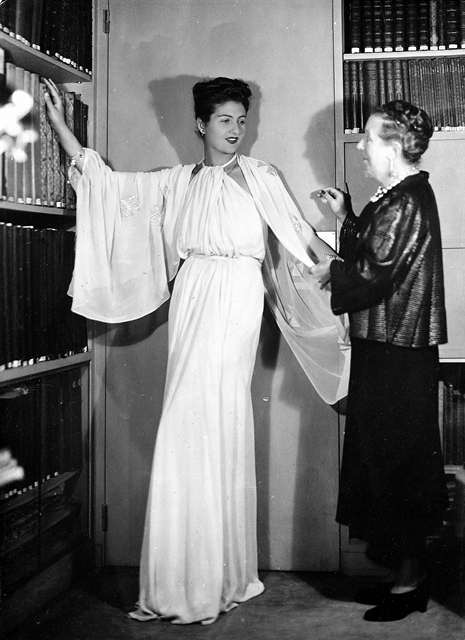In honour of Alexander McQueen, currently the subject of the retrospective Alexander McQueen: Savage Beauty at New York’s Metropolitan Museum of Art, I’d like to dedicate my inaugural blog posts to some fashion ephemera with an interesting connection to the late designer.
Between 1998 and 2002, Vogue Patterns released a series of licensed designer sewing patterns based on Givenchy designs by Alexander McQueen. These patterns provide an opportunity to study—as well as to recreate—a body of work by McQueen that is less well known than his work for his own label.
The eleven Vogue patterns represent seven collections presented by the house of Givenchy in the late 1990s. In my next three blog posts I’ll share the results of my project to match the patterns to the collections shown on the Paris runway.
Because Vogue Patterns didn’t always release these designs in the sequence in which they were shown, I’ve grouped them by collection, noting the copyright date found on my copy of each pattern. Many of the designs were not made up for the magazine’s editorials; they were usually introduced in the ‘Shop Vogue’ section in the back, often with a runway photo that helps identify the collection from which it was drawn. I’ve noted where this is the case. To facilitate comparison, I’ve also added a link to the parallel McQueen collection.
1. Givenchy Prêt-à-porter Fall/Winter 1997–98 (shown March 1997)
For their first patterns by Givenchy’s new designer, Vogue Patterns selected two designs from Alexander McQueen’s second collection for the house, the Fall 1997 ready-to-wear, which was shown in a former slaughterhouse. The first is a sharply tailored evening suit, Vogue 2086, modelled by Jacki Adams:
Here’s the description from the pattern envelope: Misses’ Jacket and Dress: Semi-fitted, partially interfaced, lined, below hip jacket has front shield extending into back collar with opening for lapels, shoulder pads, side panels, no side seams, side front pockets and long, two-piece sleeves. Close-fitting, tapered, lined dress, below mid-knee, has front princess seams, side front slit, foundation with optional bust pads, inside belt and side zipper.
This design was pictured on the cover of the March/April 1998 issue of Vogue Patterns:
Vogue 2086 remained in print for at least two years: Vogue Patterns was still promoting it in the May/June 2000 issue of the magazine (Shop Vogue).
This WWD image from the ready-to-wear collection shows the same green moiré. Vogue Paris put the jacket on the cover (as part of a pantsuit) on Chandra North:
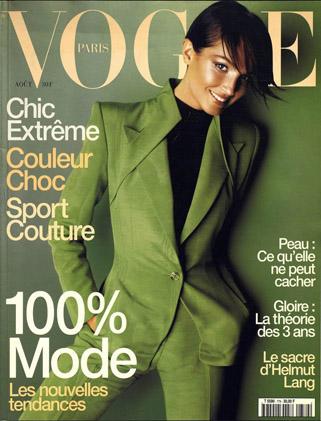
Suit by Alexander McQueen for Givenchy, Vogue Paris, Août 1997
Vogue Patterns’ second selection from the collection is a two-in-one design for a pantsuit or short coatdress, Vogue 2183:
Here’s the pattern envelope description: Misses’/Misses’ Petite Jacket, Dress & Pants: Loose fitting, partially interfaced, lined, double breasted, below hip jacket or straight dress, above mid-knee, has collar, slightly extended shoulders, shoulder pads, side panels, no side seams, flaps, welt pockets and long, two-piece sleeves. Semi-fitted, lined, straight-legged, floor length pants have waistband, side front pockets and fly zipper closing. Featured in the November/December 1998 issue of Vogue Patterns (Shop Vogue).
Images from the collection show variations on the strapless sheath and tailored pantsuit/coatdress:
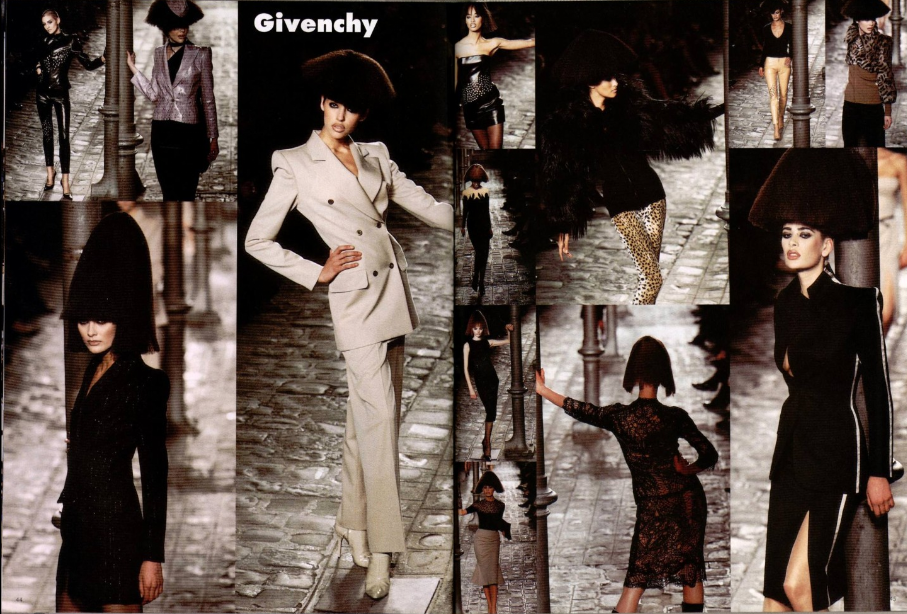
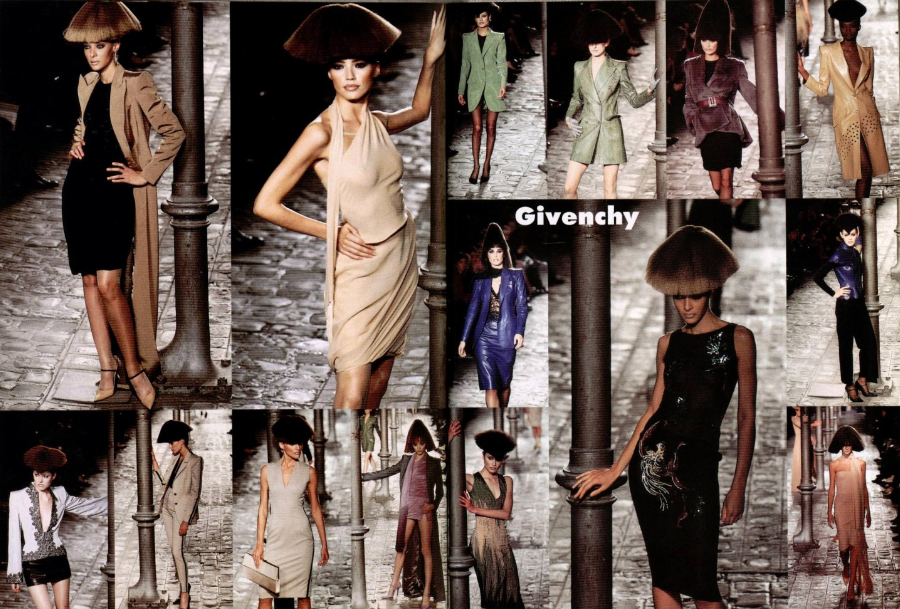

(All three images are from L’Officiel 1000 modèles 1997 no. 6 via The Fashion Spot.)
Vogue 2183 is also very similar to a suit shown on Amy Wesson in the January couture show. This was McQueen’s first collection for the house, entitled The Search for the Golden Fleece (Givenchy Haute Couture Spring/Summer 1997). In this collection image from L’Officiel, the pantsuit is in the bottom row, third from the left:
Flickr member pogisto has posted images for the entire couture collection; here’s the pantsuit. Just for fun, here’s an editorial photo of Stella Tennant in the dress with gold ivy, from Harper’s Bazaar:

Harper’s Bazaar, May 1997. Silk crepe bias-cut dress with gold ivy, Givenchy Haute Couture by Alexander McQueen. Photo: Craig McDean. Fashion editor: Melanie Ward.
Parallel Alexander McQueen collection: It’s a Jungle Out There (FW 1997–98). The Givenchy Couture collection that followed is Eclect Dissect (FW 1997–98).
2. Givenchy Prêt-à-porter Spring/Summer 1998 (shown October 1997)
This collection had a glitzy, Wild West theme. The International Herald Tribune’s Suzy Menkes summarized, “Think Calamity Jane calling in at a sex shop” (“Glitter Gulch from Givenchy As McQueen Goes Wild West”), which doesn’t sound as bad as intended to me. In any case, Vogue Patterns’ selection, Vogue 2157, a bias slip dress with optional overlay, seems to have been one of their most popular McQueen/Givenchy designs:
Envelope description: Misses’ Dress: Close-fitting, bias, flared, pullover dress, mid-knee (center back), has shoulder straps, seam detail and shaped hemline. A: sheer. Note: A is shown over B. Featured in the July/August 1998 issue of Vogue Patterns (Shop Vogue ‘cover’).
The Vogue 2157 dress is visible on the lower left in this L’Officiel collection image:
Parallel Alexander McQueen collection: Untitled (Spring/Summer 1998).
Have you seen any of these patterns made up? Do the Givenchy designs show any connections to McQueen’s work for his own label?
Bonus: SHOWstudio has a free Alexander McQueen pattern download—a kimono jacket from Scanners (FW 2003–4). See my post on the SHOWstudio pattern here.
Next: Part 2: McQueen hits his stride at Givenchy.
Tagged: 1990s, Alexander McQueen, couture, designer, exhibitions, fashion, Givenchy, ready-to-wear, Savage Beauty, Vogue Patterns









































































